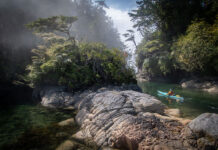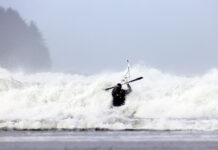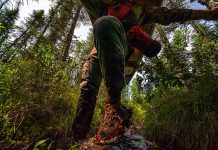Another huge wave rolled into the boomer-riddled amphitheater. I knew beyond doubt that the worst decision I had made that day was to follow instructions. I had led my peers on a route that went against my better judgment and every gut instinct I had; a decision I now realized could end very badly indeed.
we could see was her boat pitching near vertical and airborne as she paddled like mad to get over the steep, foaming peak. For a moment, I was convinced that she must have capsized on the far side, but as the wave rolled past I could see that she had made it through upright. Cold relief ran through me, but I felt culpable, having muddled through the scenario in a state somewhere between paralysis and total incompetence.
This was the scene on my Level 3 Guide exam with the Sea Kayak Guides Alliance of BC (SKGABC) last spring. Leading up to that moment I had crossed threshold after threshold, inevitably lingering far too long in sea states that were way beyond any commercial trip I would ever guide. Perhaps the first threshold had been getting out of my tent that morning, after a sleepless night and stress-riddled nightmares.
Age and experience have made me a more grounded and capable guide and instructor, yet they have perhaps had an inverse affect on my ability to manage contrived exam-based stressors. As a result, I walked away from those three days without my Level 3 ticket, but equipped with a greater insight into the exam process and a lingering question: what exactly are we testing for in such scenarios?
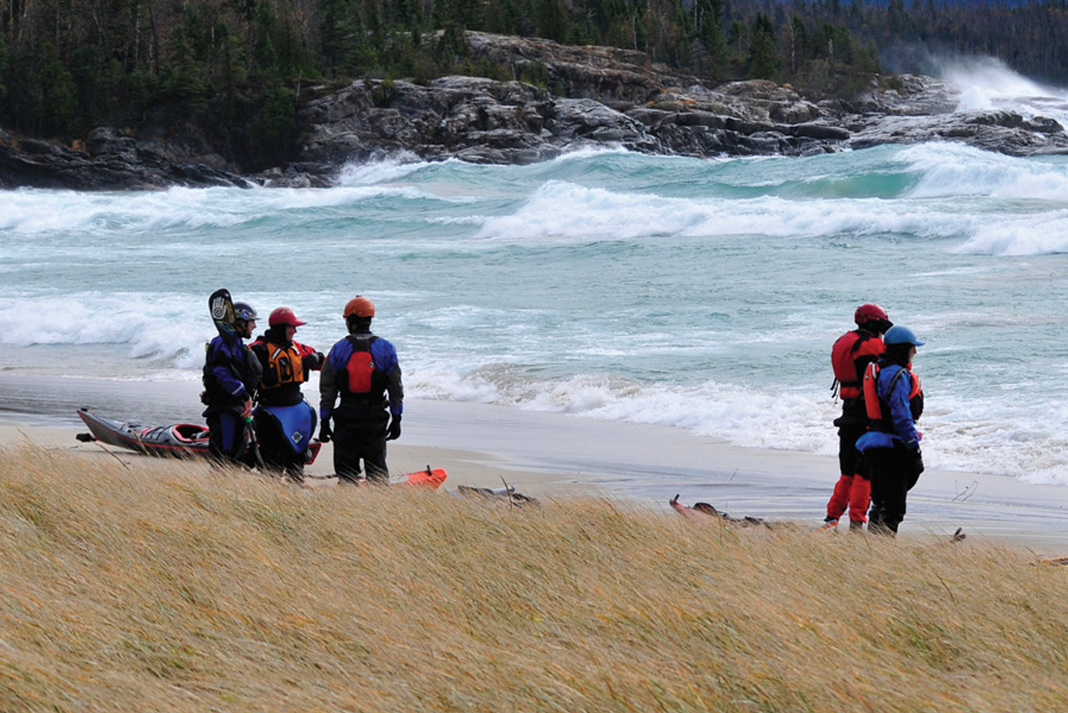
The SKGABC guide exam is structured to focus heavily on incident response and crisis management, and to see that candidates are put through their paces in simulated shit-hitting-the-fan moments. Quite rightly, it is testing for the worst-case scenario in dynamic ocean environments. As a rule during an exam scenario, anything that could go wrong does: tucked skirt loops, open hatches, acute illness mid-surf launch, sea sickness, behavioral issues, random capsizes and even stolen safety equipment all in a single
one- or two-hour scenario in rough seas are de rigeur. Knowledge of the weather, tides and currents and a plethora of other technical information are also scrutinized.
To be sure, these are all valid and critical components of being a good guide and instructor. Yet I still feel that such tests are missing the boat.
At the higher levels of certification, the SKGABC runs exams, not courses. Poker-faced examiners aspire to give candidates no clue as to their success or failure in a specific task, question or scenario. Learning on the two- and three-day exams is seen as incidental rather than intentional. If something is handled well during a scenario, or if something is handled very poorly, there is no process to draw out what that was or what can be learned from it—not just by the candidate in question, but also by the others taking the exam. In particular, attentiveness to the factors that could have prevented the issue in the first place are much less recognized or rewarded on the score sheet than incident response.
Absent from the rubric is the host of more complex and nuanced skills needed in outdoor leadership. Questions of complex decision making around route choices—to go or not go, group ability, individual client considerations and how they affect the group, effective communication (including listening and being attentive to the social dynamic)—are noted in the manuals but not prioritized in exams and courses, despite being leading causes of outdoor incidents.
“Rather than push aspiring leaders to perform in overly challenging scenarios, we should prioritize good judgment.”
This is the crux of the matter, and is meted out in the study of risk management in the outdoors. Even in situations where there is some powerful and seemingly unpredictable act of nature—such as avalanches, rogue waves or amplified sea states—events are usually precipitated by a series of missteps in judgment and decision making. The pressure to get to a certain destination is one of the main culprits, as is the desire to avoid conflict with a client or co-leader.
Paddlesports leadership has become increasingly institutionalized by organizations that act as gatekeepers to professional certification and, in some cases, licensing to work in specific areas. This is not a bad thing. The need for standards in guide and instructor competency is a real one, and individuals within these organizations work hard to constantly review curriculum and outcomes. Earlier this year, the SKGABC launched its own program review by surveying members and working towards revising exam materials and processes.
How do we do a better job? We design training and assessment programs to develop higher-level consciousness as well as competence. Rather than pushing aspiring leaders to perform in overly challenging scenarios—and sometimes even penalizing more conservative decisions—we should be prioritizing good judgment and pro-active risk management. This is a much more complex and subtle skill set, rooted in an ability to read people and conditions, along with a self-awareness that prevents us from being pressured into bad situations.
Such a shift, while more difficult to assess, would decrease the odds of the shit hitting the fan in the first place.
Fiona Hough has worked as paddlesports guide, instructor and trainer for more than 25 years. Recently, she was the keynote speaker at the inaugural International Sea Kayaking Educators Conference.
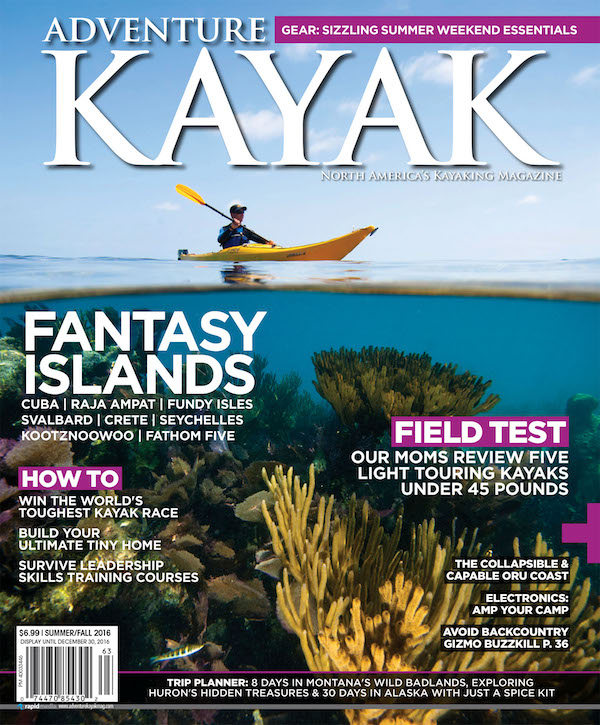 This article originally appeared in the Adventure Kayak Summer/Fall 2016 issue.
This article originally appeared in the Adventure Kayak Summer/Fall 2016 issue.
Subscribe to Paddling Magazine and get 25 years of digital magazine archives including our legacy titles: Rapid, Adventure Kayak and Canoeroots.



